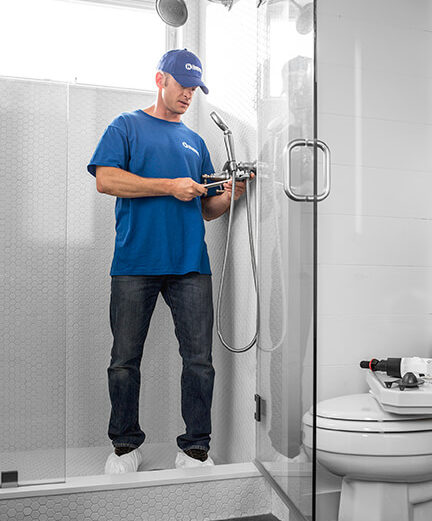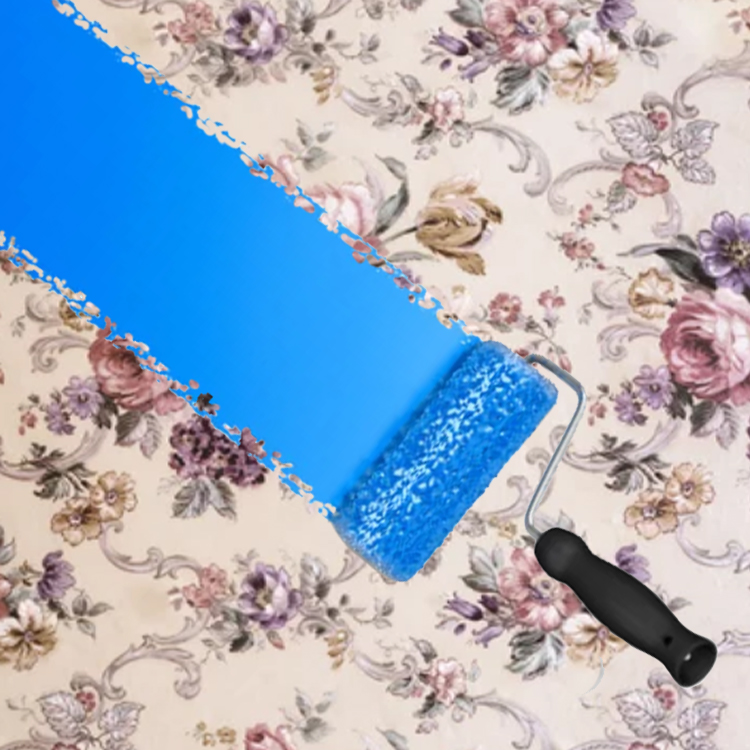We offer a wide range of services for that fresh look, or just maintenance or updates to keep your home functioning and safe. Regardless of the size of the job, we have a craftsman that can tackle it. We offer a wide range of services for that fresh look, or just maintenance or updates to keep your home functioning and safe. Regardless of the size of the job, we have a craftsman that can tackle it.

Painting / July 20, 2021

Paint is typically a quick and affordable way to update or change the feel of a space. Unfortunately, the relatively short process of painting a room can become encumbered when the walls are covered with wallpaper, a decorative but difficult to remove the wall covering. To prepare a wallpapered wall for a fresh coat of paint, painting services in Etobicoke will need to strip the paper and clean the drywall surface of the glue. The process can be time-consuming and potentially costly, leading many homeowners to the question: can you paint over wallpaper?
In most circumstances, it is best to remove the wallpaper before painting, but it is not always necessary or advisable. If the wallpaper is in good condition, you can often paint right over it, depending on the material. Additionally, if the paper was adhered to unfinished drywall, it is best to leave it in place and paint over the top because removing it might damage the drywall underneath. If the wallpaper is only one of many underlayers, it is also best to leave the paper up and paint over it.
All wallpaper is not created equal. Some materials, like fabric-backed vinyl, should not be painted over. In general, a wallpaper that is easy to be removed should be, and one that is not can be painted over. While most paint manufacturers will push you to remove the paper, unless the paper will affect the finish and quality of the paint, it is not always necessary.
Before you dip your paintbrush, you will need to prepare the surface. Painting over wallpaper is not the same as painting over drywall. If you want adequate coverage, you will need the correct supplies and methods. When painting over wallpaper, you should perform the following six steps in order.
Before getting started, you will need to gather the necessary supplies for your painting project. You will want to collect the following:
Before painting, you will need to clean the wall. You will want to use the bucket, cloths, TSP, and mineral spirits. However, it is crucial to keep the rags only slightly damp during this process. Soaking the wall will make the wallpaper and the adhesive separate, meaning you will have little choice but to remove the paper.
You do not have to scrub the surface. Your goal is to remove any excess dust, anything that will prevent the primer from sticking to the wallpaper.
If you notice any areas where the wallpaper is peeling or torn, you will need to repair these spots to ensure they do not ruin your topcoat. You can use wallpaper adhesive and spackle to help repair any damages. Be sure to sand any spackling smooth.
When the surface is clean and repaired, you can tape off the area. You want to tape over molding and trim work to ensure the paint does not inadvertently mar the finish.
You want to use an oil-based primer to avoid damage the wallpaper. A water-based primer will soak into the paper and damage adhesion. An oil-based primer can be used regardless of your choice of topcoat.
You can select a water-based or oil-based paint for the topcoat. Paint as you would any other surface. Two coats are likely, so allow each layer to dry before starting the next.
Painting, especially when wallpaper is involved, is a significant task. For the best results, it is best left to the professionals. Contact a painter with Handyman Connection for a quality finish.